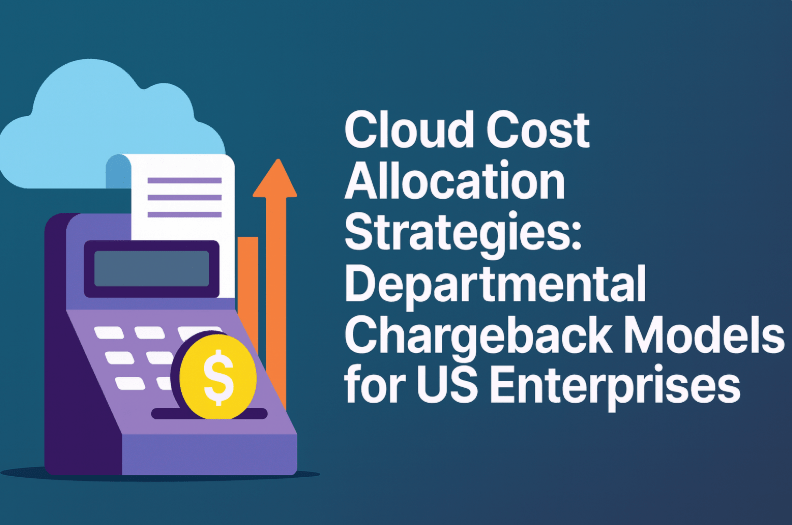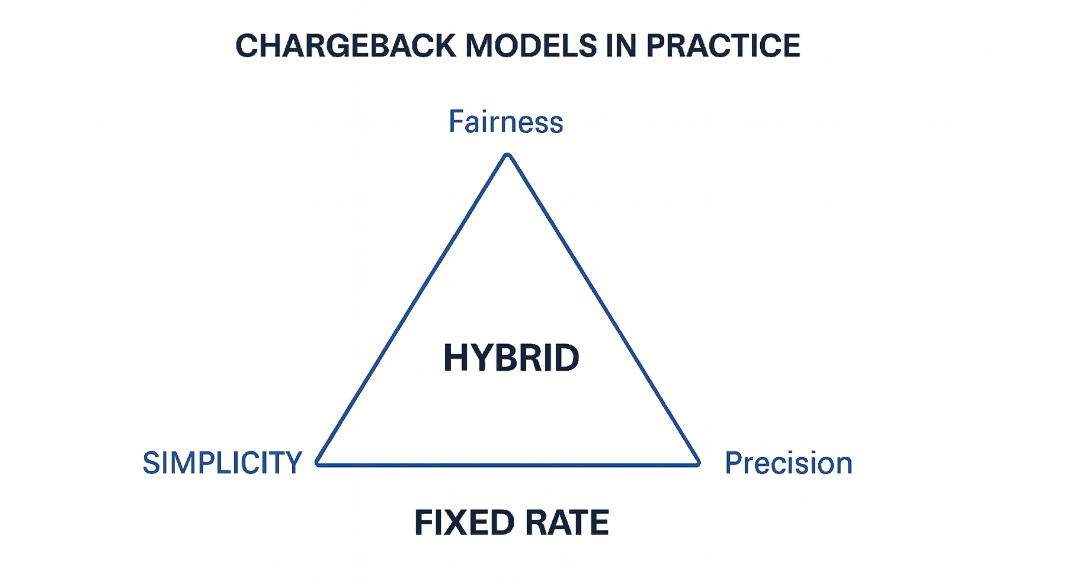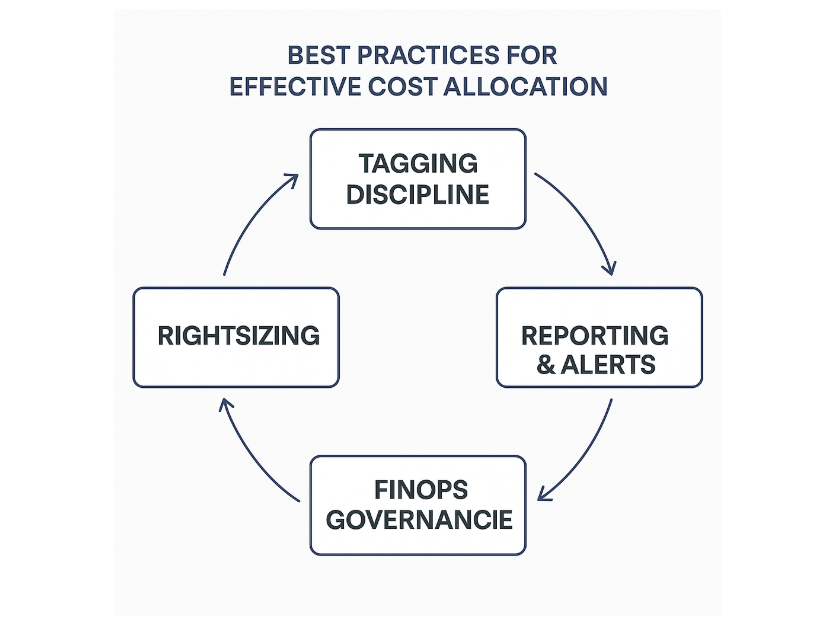
The adoption of cloud services and SaaS applications has transformed how US enterprises build, operate, and scale their digital infrastructure. While the cloud provides scalability and agility, it also introduces new financial complexities. Traditional IT cost structures—capital expenditures and centralized IT budgets—have given way to decentralized operating expenses, billed on-demand and across multiple providers.
As a result, CFOs and CIOs are grappling with the question: How do we fairly distribute cloud costs across departments and ensure accountability for usage?
The answer lies in cloud cost allocation strategies and departmental chargeback models. These frameworks ensure that the costs of cloud and SaaS consumption are attributed directly to the teams and business units responsible for them. Done effectively, they foster accountability, encourage optimization, and align IT usage with enterprise-wide financial goals.
This article explores how US enterprises can design and implement effective chargeback models, supported by best practices, tools, and platforms like Binadox, to transform cloud cost management into a driver of business efficiency.
What is Cloud Cost Allocation?
Cloud cost allocation is the structured process of mapping cloud and SaaS expenses to the departments, projects, or teams that consume those resources. Instead of rolling all cloud costs into a single IT line item, enterprises can distribute them across cost centers.
This is essential in the cloud era, where teams independently provision resources, often without central oversight. Developers may spin up new AWS instances, marketing may subscribe to HubSpot or Zoom, and finance may expand its use of GCP analytics. Each of these costs must be attributed and allocated to prevent overspending and disputes.
For compliance-driven industries, cloud cost allocation is not just a financial best practice—it’s a regulatory necessity. For example, cloud cost transparency for SOX compliance ensures publicly traded companies meet financial reporting standards.
Why Chargeback Models Matter
While “showback” models provide visibility into usage, they stop short of enforcement. Chargeback models, on the other hand, bill departments directly for their consumption. This transforms the cloud into a metered utility where costs align with responsibility.
Benefits for US Enterprises:
- Financial accountability – Departments pay for what they use, reducing waste.
- Budget alignment – Finance can accurately forecast departmental spending.
- Operational efficiency – Teams optimize usage when costs impact their own budgets.
- Cultural change – Cloud is no longer seen as “free IT,” but a shared business utility.
In practice, enterprises adopting FinOps cloud cost management frameworks often use chargeback models as a foundation for cost transparency and financial accountability.
Chargeback Models in Practice
US enterprises typically adopt one of three chargeback models, depending on their maturity and needs:
1. Usage-Based Chargeback
Departments are billed directly for consumption metrics such as compute hours, storage volumes, and SaaS license counts.
- Pros: Transparent, precise, encourages responsible usage.
- Cons: Requires consistent tagging and granular tracking.
Example: An engineering team running large AWS EC2 instances is billed for their compute hours, while the marketing team is billed for its HubSpot subscription.
2. Fixed Rate Allocation
Costs are distributed using pre-set percentages, often based on headcount, revenue, or department size.
- Pros: Simple and predictable.
- Cons: May feel unfair if one team consumes more than others.
Example: An IT security tool benefits all departments, so its costs are split: 30% engineering, 30% finance, 40% marketing.
3. Hybrid Model
Shared services are billed at fixed rates, while department-specific consumption is billed by usage.
- Pros: Balances simplicity with fairness.
- Cons: Requires governance to avoid disputes.
Example: Core networking services are divided evenly, while AWS, GCP, and SaaS costs are billed by consumption.

Best Practices for Effective Cost Allocation
Designing a chargeback model is only the beginning. To be effective, enterprises must adopt robust best practices.
1. Enforce Tagging Discipline
Tags are the backbone of cost allocation. Without them, resources fall into an “unallocated bucket.” Departments must tag resources by project, department, owner, and environment.
Guidance like cloud tagging for cost allocation ensures consistency, while platforms like Binadox automate detection of untagged resources.
2. Rightsize Cloud & SaaS Resources
Departments often overprovision. Engineers may choose oversized compute instances, or HR may maintain unused Zoom licenses. Rightsizing ensures resources match actual usage.
Automated solutions like cloud rightsizing recommend optimized configurations, reducing unnecessary departmental costs.
3. Automate Reporting & Alerts
Cloud bills are massive and complex. Automated dashboards and anomaly detection highlight overspending before invoices arrive.
Cloud cost anomaly detection ensures finance and IT can respond quickly to spikes, preventing budget overruns.
4. Centralize Procurement
Shadow IT creates duplication and waste. By centralizing SaaS procurement, enterprises prevent overlap and negotiate enterprise discounts.
Platforms like SaaS cost optimization provide visibility into all SaaS apps, enabling finance to allocate costs fairly and cancel unused subscriptions.
5. Apply FinOps Governance
FinOps practices ensure collaboration across finance, IT, and business units. Chargeback models succeed when paired with structured governance, enabled by cloud cost optimization strategies.

Challenges of Implementing Chargeback
Despite the benefits, chargeback adoption is not without obstacles:
- Tagging inconsistency – Without strict policies, costs remain unallocated.
- Shared services disputes – Centralized tools (e.g., security, compliance) are hard to divide fairly.
- Cultural resistance – Teams unused to paying for IT may push back.
- Multi-cloud complexity – Enterprises using AWS, Azure, and GCP require unified allocation systems.
These challenges highlight the importance of automation, governance, and cultural change management in chargeback adoption.
How Binadox Supports Chargeback
Binadox is a cost management platform designed to unify cloud and SaaS allocation, enabling US enterprises to implement fair chargeback models.
Key features include:
- Multi-cloud integration – AWS, Azure, GCP, and SaaS apps tracked in one platform.
- Spend by tags – Allocates costs to departments, projects, or cost centers.
- SaaS license manager – Assigns license costs to specific users or departments.
- Renewals calendar – Alerts departments of upcoming SaaS renewals to avoid surprise charges.
- Rightsizing recommendations – Suggests downsizing workloads or licenses.
- Anomaly detection – Identifies unusual spend spikes in near real-time.
Together, these features automate cost allocation and minimize disputes, making chargeback scalable for enterprises.
Case Study: A US Financial Enterprise
A financial services firm with three main departments illustrates chargeback in action:
- Marketing → Uses Salesforce, HubSpot, and Zoom.
- Engineering → Runs AWS and Azure workloads.
- Finance → Operates analytics in GCP.
By adopting Binadox:
- Marketing is billed for unused Zoom seats.
- Engineering is billed for oversized EC2 instances.
- Finance is billed for inactive BigQuery datasets.
Monthly reports provide full visibility, and departments adjust their consumption accordingly. The result is financial accountability, cost reduction, and cultural alignment.
Future of Chargeback Models
AI-Driven Allocation
Artificial Intelligence (AI) and Machine Learning (ML) are set to transform chargeback practices. Rather than relying solely on static tagging and manual reporting, AI systems will analyze historical usage patterns to predict future consumption at the departmental level. For example, an ML model could anticipate that engineering usage spikes in Q4 due to product launches and adjust budget forecasts accordingly.
AI will also play a role in tagging correction. Today, untagged or mis-tagged resources create gaps in allocation. In the near future, AI-driven systems will automatically detect untagged workloads, infer their owners based on context (like IAM roles, billing behavior, or linked SaaS accounts), and allocate costs correctly.
Additionally, AI recommendations will move beyond reactive reporting. Instead of simply flagging overspending, future platforms will proactively suggest optimal resource configurations, subscription tiers, or procurement strategies for each department. This predictive, prescriptive model will ensure that chargeback evolves into a strategic advisory function rather than just an accounting mechanism.
Edge Computing Challenges
As more enterprises adopt IoT and real-time analytics, edge computing adds another layer of complexity. Unlike traditional cloud workloads consolidated in centralized data centers, edge workloads operate closer to the data source—factories, hospitals, or retail locations. This decentralization raises the question: Who owns these costs?
For instance, a healthcare enterprise may deploy edge computing for medical imaging analysis in multiple clinics. The IT department manages the infrastructure, but the costs should rightfully roll up to the healthcare units that benefit from the service. Similarly, in retail, edge workloads powering in-store analytics need to be allocated to regional operations budgets, not central IT.
Chargeback models will need to adapt to allocate edge costs based on both geographic and departmental ownership. Enterprises will likely introduce hybrid models that split costs between central IT (for shared infrastructure and security) and local business units (for operational usage).
Vertical-Specific Chargeback
Industries such as healthcare, finance, education, and government will increasingly require tailored chargeback structures. These industries face unique compliance obligations that impact cost allocation.
- Healthcare: HIPAA compliance often requires redundant storage and security services. Chargeback models must account not just for raw usage but for the compliance overhead each department imposes.
- Finance: Regulations such as SOX or PCI DSS demand additional security and monitoring services. Finance IT departments will need models that fairly distribute these regulatory compliance costs across lines of business.
- Education: Universities may allocate cloud costs differently for research projects (often grant-funded) versus administrative workloads. Transparent chargeback ensures compliance with grant restrictions.
This industry-specific lens will push chargeback models beyond generic allocation, toward frameworks that reflect sector-specific operating models and regulatory costs.
FinOps as Culture
Perhaps the most profound change will be cultural. Today, chargeback is often viewed as a finance-driven enforcement tool. In the future, it will evolve into a core aspect of enterprise culture.
In a mature FinOps organization, every department understands that cloud is not just a technical enabler—it’s a financial resource to be managed strategically. Engineers will design workloads with cost accountability in mind. Marketing will evaluate SaaS subscriptions not only for features but also for long-term financial sustainability. Finance teams will collaborate with IT to model different scenarios before approving new deployments.
This cultural shift means chargeback won’t feel punitive. Instead, it will be embraced as a way to ensure fairness, transparency, and shared responsibility across the enterprise. Just as sustainability has become a shared cultural value in many organizations, cloud cost accountability will become embedded in everyday decision-making.
Conclusion
In the era of decentralized cloud and SaaS usage, departmental chargeback is essential for US enterprises. By linking costs directly to the departments that consume resources, enterprises gain transparency, accountability, and financial efficiency.
Adopting best practices—tagging, rightsizing, anomaly detection, centralized procurement, and FinOps governance—ensures chargeback models succeed. Platforms like Binadox make it possible to automate allocation, minimize disputes, and scale financial governance across multi-cloud and SaaS ecosystems.
Ultimately, chargeback strategies do more than manage costs—they create a culture of accountability and financial responsibility that empowers enterprises to grow smarter in the digital era.

